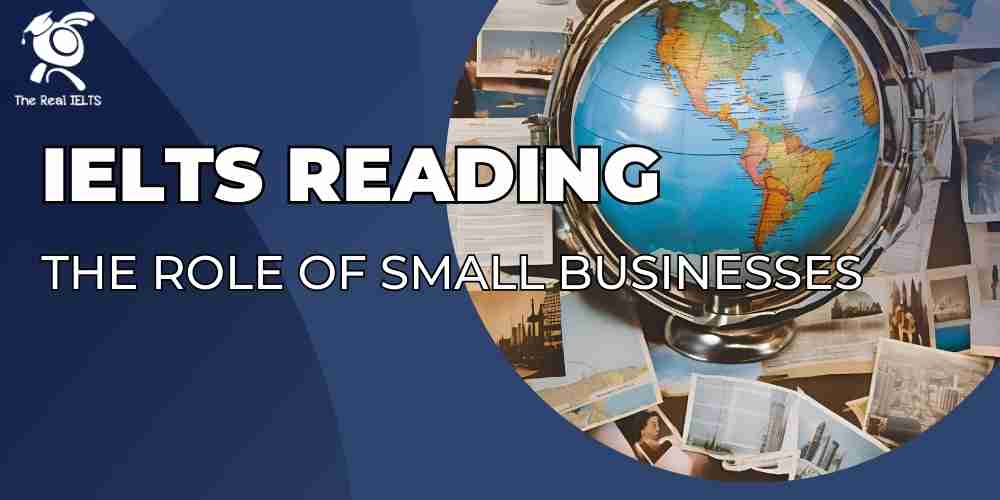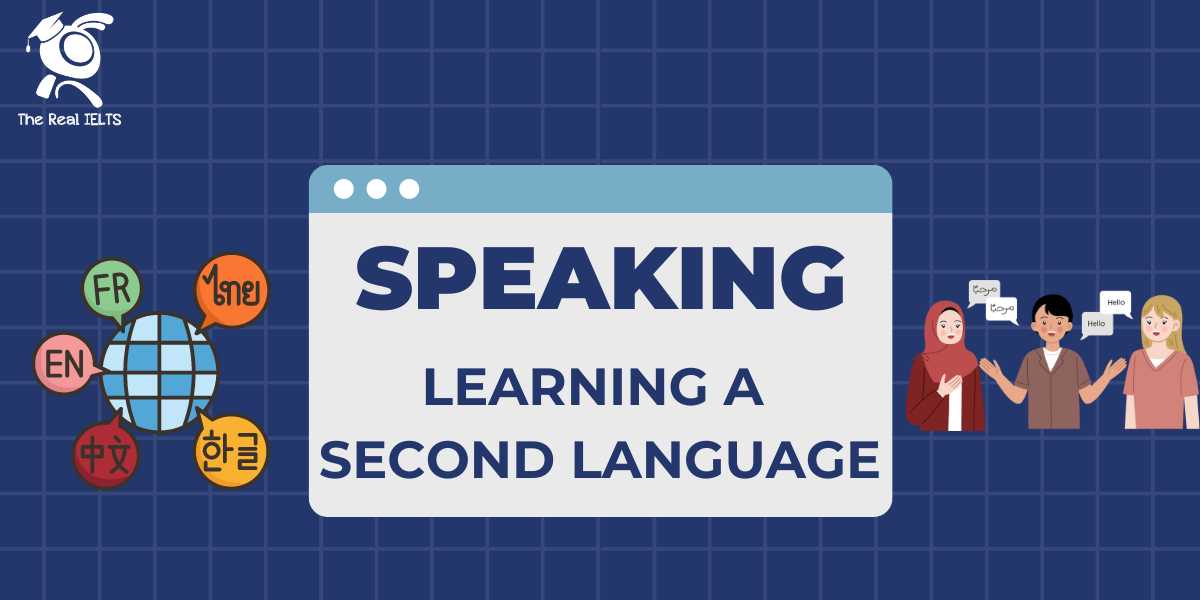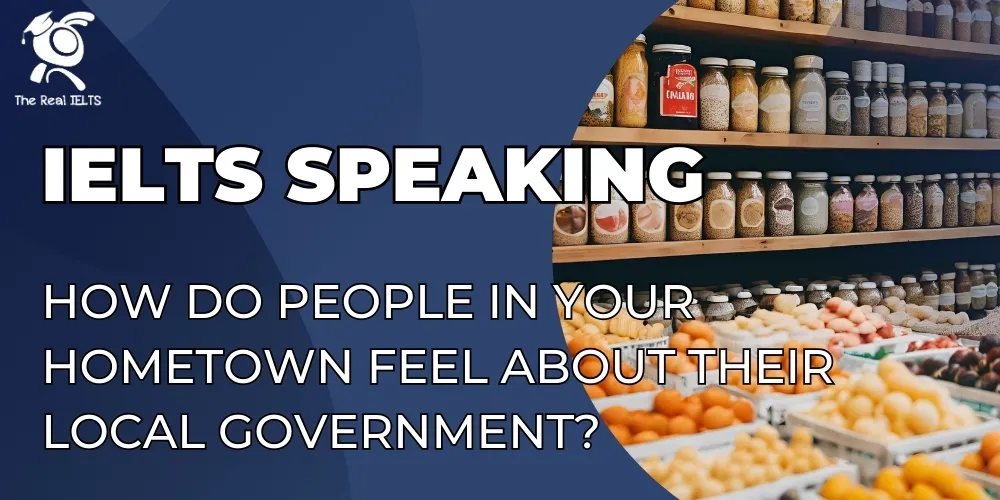IELTS Reading 62: The Role of Small Businesses là chủ đề thuộc chuỗi bài luyện tập 11 dạng bài IELTS Reading và các bài tập luyện tập.
Học lại bài cũ: IELTS Reading 61: Globalization and the economy.
IELTS Reading: The Role of Small Businesses
Small businesses play a crucial role in the economic landscape of any country, acting as catalysts for innovation, job creation, and economic growth. Often defined as enterprises with fewer than 500 employees, small businesses range from family-run stores to tech startups. Despite their size, these businesses contribute significantly to the economy, providing diverse services and products that cater to unique customer needs.
One of the primary benefits of small businesses is their ability to create jobs. In many economies, they are responsible for a significant proportion of employment opportunities, particularly in rural and developing areas where large corporations are less likely to operate. By providing these jobs, small businesses help reduce unemployment rates and enhance income distribution within communities.
In addition to job creation, small businesses drive innovation. Due to their size, they are often more flexible than larger companies, allowing them to quickly respond to changes in market demand and customer preferences. This adaptability enables them to experiment with new ideas and products, often leading to breakthroughs that benefit the entire industry. For instance, many technological advancements and disruptive business models have originated from small startups.
Moreover, small businesses contribute to the local economy by keeping money within the community. When customers support local enterprises, the revenue generated is often reinvested back into the area, benefiting other businesses and supporting local services. This creates a cycle of economic activity that strengthens the community as a whole, fostering resilience and sustainability.
Despite their contributions, small businesses face several challenges that can limit their growth. Limited access to funding is a major obstacle, as many small enterprises struggle to secure the capital needed for expansion. Additionally, they often have to compete with large corporations that have greater resources and economies of scale, making it difficult to maintain competitive prices or extensive marketing campaigns.
Governments and policymakers recognize the importance of small businesses and have implemented various support measures to assist them. These include providing tax incentives, reducing regulatory burdens, and facilitating access to credit. By supporting small businesses, governments aim to stimulate economic growth, encourage entrepreneurship, and create a diverse and resilient economy.
In conclusion, small businesses are essential to economic development, contributing to job creation, innovation, and community growth. Despite facing challenges, their role remains vital, and their success ultimately benefits society as a whole. As a result, continued support for small businesses can lead to a more dynamic and inclusive economy.
Questions
1. Multiple Choice
Choose the correct answer (A, B, C, or D) for each question.
- What is one of the primary benefits of small businesses?
- A. They generate large-scale profits.
- B. They operate internationally.
- C. They create jobs in various regions.
- D. They focus on technology exclusively.
- Why are small businesses often more innovative?
- A. They invest more in research.
- B. They have fewer regulations to follow.
- C. They are able to adapt quickly to market changes.
- D. They have extensive financial support from the government.
2. True/False/Not Given
- Small businesses have fewer than 500 employees.
- Large corporations create more jobs in rural areas than small businesses.
- Governments provide financial support to all small businesses.
3. Yes/No/Not Given
- Small businesses are essential for job creation.
- Only small businesses contribute to local economic sustainability.
- Small businesses generally have better marketing resources than large corporations.
4. Matching Information
Match each piece of information with the correct paragraph (A, B, C, etc.).
- Discusses the challenges small businesses face.
- Mentions how local economies benefit from small businesses.
- Describes government initiatives to support small businesses.
5. Matching Headings
Choose the correct heading for each paragraph from the list of headings below.
- Paragraph discussing employment opportunities created by small businesses
- Paragraph about how small businesses help innovate industries
- Paragraph describing the financial challenges for small businesses
List of Headings
- A. Financial Struggles and Funding
- B. Contributions to Local Economies
- C. Importance in Job Creation
- D. Support from Government
6. Matching Sentence Endings
Match the beginning of each sentence with the correct ending (A, B, C, or D).
- Small businesses can quickly adapt because…
- By hiring local people, small businesses…
- Governments aim to support small businesses to…
Sentence Endings
- A. help reduce unemployment rates in communities.
- B. stimulate innovation across industries.
- C. they are more flexible than large corporations.
- D. reduce regulatory burdens for entrepreneurs.
7. Sentence Completion
Complete the sentences below using words from the reading passage.
- Small businesses are often more innovative due to their __________ in responding to market demands.
- Many technological advancements have originated from __________.
- By keeping money within the __________, small businesses contribute to local growth.
8. Summary Completion
Complete the summary below using words from the passage.
Small businesses are vital to economic growth by __________ jobs and fostering __________. Despite their advantages, they often face __________, especially in acquiring sufficient funding. Governments assist these businesses by providing __________ and reducing regulatory challenges.
9. Diagram Label Completion
Label the following diagram with information from the reading passage.
- Job Creation
- Community Contribution
- Financial Challenges
- Government Support
10. Short Answer Questions
Answer the following questions with no more than three words.
- What do small businesses help reduce in local communities?
- Where is the revenue of small businesses often reinvested?
- What do governments provide to encourage the growth of small businesses?
11. Table/Flowchart/Note Completion
Complete the table below with words from the passage.
| Aspect | Information Provided |
|---|---|
| Economic Role | Creates jobs and ___________ |
| Main Challenge | ___________ to capital |
| Government Support | Provides ___________ |
| Community Benefit | Keeps money ___________ |
Đáp án
1. Multiple Choice
- C – They create jobs in various regions.
- C – They are able to adapt quickly to market changes.
2. True/False/Not Given
- True
- False
- Not Given
3. Yes/No/Not Given
- Yes
- No
- No
4. Matching Information
- Paragraph discussing the challenges small businesses face
- Paragraph mentioning how local economies benefit from small businesses
- Paragraph describing government initiatives to support small businesses
5. Matching Headings
- C – Importance in Job Creation
- B – Contributions to Local Economies
- A – Financial Struggles and Funding
6. Matching Sentence Endings
- C – they are more flexible than large corporations.
- A – help reduce unemployment rates in communities.
- B – stimulate innovation across industries.
7. Sentence Completion
- flexibility
- startups
- community
8. Summary Completion
- creating
- innovation
- challenges
- tax incentives
9. Diagram Label Completion
- Job Creation
- Community Contribution
- Financial Challenges
- Government Support
10. Short Answer Questions
- Unemployment rates
- Local area
- Tax incentives
11. Table/Flowchart/Note Completion
| Aspect | Information Provided |
|---|---|
| Economic Role | Creates jobs and stimulates innovation |
| Main Challenge | Access to capital |
| Government Support | Provides tax incentives |
| Community Benefit | Keeps money within community |















